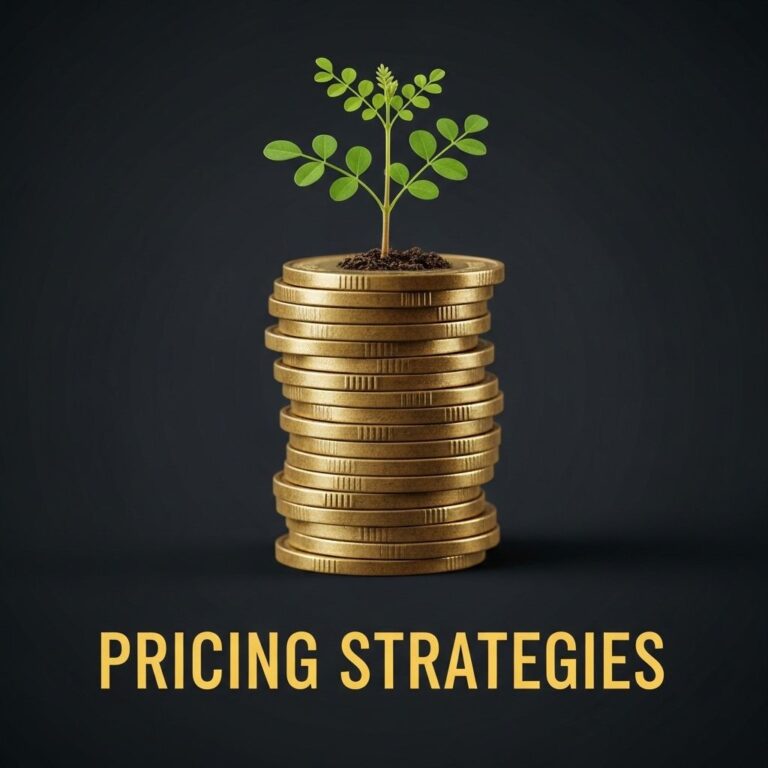In today’s digital age, building a successful website that generates substantial revenue is an enticing prospect for many entrepreneurs. Many aspire to create an online platform that not only showcases their brand but also serves as a significant source of income. This article will guide you through the steps to create a website capable of earning $500 a day, discussing everything from initial concept to monetization strategies.
Table of Contents
Choosing Your Niche
The first step in building a profitable website is selecting the right niche. Your niche should reflect your passion, expertise, and market demand. Here are some tips to help you identify a viable niche:
- Identify Your Interests: What topics are you passionate about? Consider how you can turn these passions into a business.
- Market Research: Use tools like Google Trends or SEMrush to find out what people are searching for.
- Competitor Analysis: Look at existing websites in potential niches to determine if there’s room for improvement.
Building Your Website
Once you’ve chosen your niche, it’s time to build your website. This process includes selecting a domain name, choosing a hosting provider, and designing your site.
Selecting a Domain Name
Your domain name is your website’s first impression. It should be:
- Memorable
- Relevant to your niche
- Short and easy to spell
Choosing a Hosting Provider
Select a reliable hosting provider that suits your needs. Consider factors like:
- Uptime: Look for 99.9% uptime guarantees.
- Customer Support: 24/7 support is crucial.
- Scalability: Ensure they offer plans that can grow with your website.
Designing Your Site
Use a user-friendly platform to design your website. Popular options include:
- WordPress: Highly customizable and user-friendly.
- Wix: Great for beginners with drag-and-drop features.
- Shopify: Ideal for eCommerce sites.
Creating Quality Content
Content is king when it comes to attracting and retaining visitors. High-quality content will drive traffic and improve your site’s SEO. Here are content strategies to consider:
Types of Content to Create
Consider the following types of content to keep your audience engaged:
- Blog Posts: Informative and engaging posts that address your audience’s pain points.
- Videos: Visual content can enhance user experience.
- Infographics: Easy-to-digest visual representations of complex information.
Content Calendar
Develop a content calendar to plan your posts. This ensures consistency and helps you stay organized. You can structure your calendar as follows:
| Week | Content Type | Topic |
|---|---|---|
| 1 | Blog Post | Understanding SEO |
| 2 | Video | How to Use Google Analytics |
| 3 | Infographic | The Power of Social Media Marketing |
| 4 | Blog Post | Tips for Email Marketing |
Driving Traffic to Your Website
Creating a great website is just the first step; you need to drive traffic to it. Here are effective strategies:
Search Engine Optimization (SEO)
Optimizing your website for search engines is crucial for organic traffic. Some key SEO tips include:
- Use relevant keywords in your content.
- Optimize meta tags and descriptions.
- Ensure your site is mobile-friendly.
Social Media Marketing
Leverage social media platforms to promote your content. Consider the following:
- Identify Platforms: Choose platforms where your audience is most active (e.g., Instagram, Facebook, Twitter).
- Engagement: Regularly interact with your followers to build a community.
- Share Valuable Content: Post links to your blogs, videos, and other content.
Email Marketing
Building an email list is a powerful way to engage with your audience. Use these tips:
- Offer incentives (like free eBooks) for signing up.
- Send regular newsletters with valuable content and promotions.
- Segment your audience for targeted campaigns.
Monetization Strategies
To reach your goal of $500 a day, you will need to implement effective monetization strategies. Here are some options to consider:
Affiliate Marketing
Partner with brands to promote their products and earn commissions on sales made through your referral links. Popular affiliate programs include:
- Amazon Associates
- ShareASale
- ClickBank
Ad Revenue
Generate income through advertisements on your website. Consider these platforms:
- Google AdSense: Display ads relevant to your audience.
- Media.net: A good alternative with contextual ads.
Product Sales
Consider selling your products or services directly on your website. This could include:
- Physical products (e.g., merchandise, crafts)
- Digital products (e.g., eBooks, online courses)
- Services (e.g., consulting, coaching)
Tracking Your Progress
To achieve your financial goal, you need to track your website’s performance. Use tools like:
- Google Analytics: Monitor traffic sources and user behavior.
- Conversion Tracking: Measure how well your monetization strategies are working.
Setting Goals
Set specific, measurable goals for your website. For instance:
- Daily Traffic: Aim for a specific number of daily visitors.
- Revenue Targets: Set monthly income targets.
Scaling Your Website
As you begin to see success, consider scaling your operations. Strategies to scale include:
- Outsourcing content creation to freelancers.
- Expanding your product line or services.
- Investing in paid advertising to boost traffic.
Conclusion
Creating a website that generates $500 a day is achievable with the right strategy and dedication. By choosing a profitable niche, building a quality website, producing engaging content, driving traffic, and effectively monetizing your platform, you can reach your financial goals. Stay committed and adaptable, as the digital landscape continuously evolves. Your journey towards a successful website starts now!
FAQ
What are the key elements to building a website that sells $500 a day?
To build a successful website that generates $500 a day, focus on high-quality content, effective SEO strategies, a user-friendly design, and strong marketing techniques. Utilize e-commerce platforms, optimize for conversions, and ensure mobile compatibility.
How can I choose the right niche for my website?
Selecting the right niche involves researching market demand, identifying your passions, and analyzing competition. Look for a balance between profitability and personal interest to ensure sustainability.
What marketing strategies can help drive traffic to my website?
Effective marketing strategies include search engine optimization (SEO), social media marketing, email marketing, and paid advertising. Create engaging content and leverage influencers in your niche to expand your reach.
How important is website design for sales?
Website design is crucial for sales as it affects user experience, trust, and navigation. A clean, professional design with clear calls-to-action can significantly increase conversion rates.
What tools can I use to track my website’s performance?
Utilize tools like Google Analytics, SEMrush, or Ahrefs to track your website’s performance. These tools provide insights into traffic sources, user behavior, and conversion rates, helping you optimize your site.
How can I improve my website’s SEO to increase sales?
To improve SEO, focus on keyword research, create high-quality content, optimize meta tags, utilize internal linking, and build backlinks. Regularly update your content and ensure your website is mobile-friendly.









